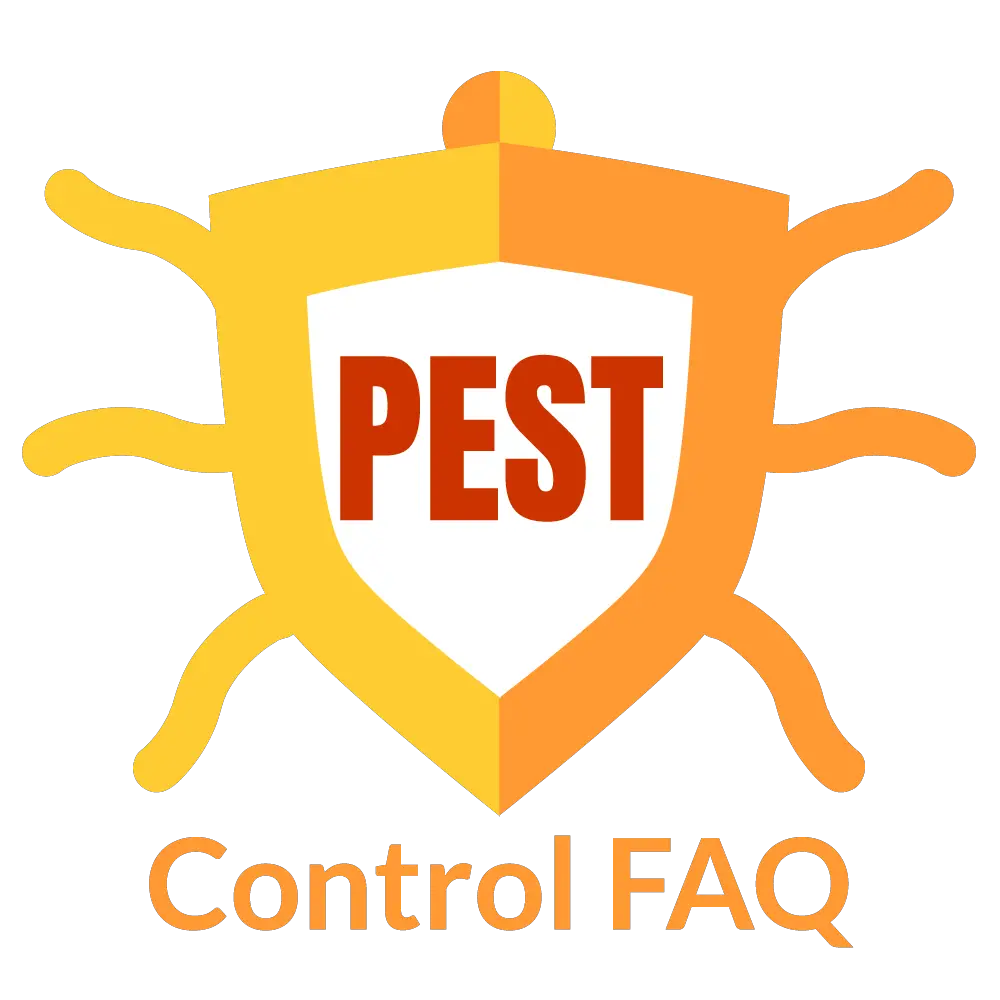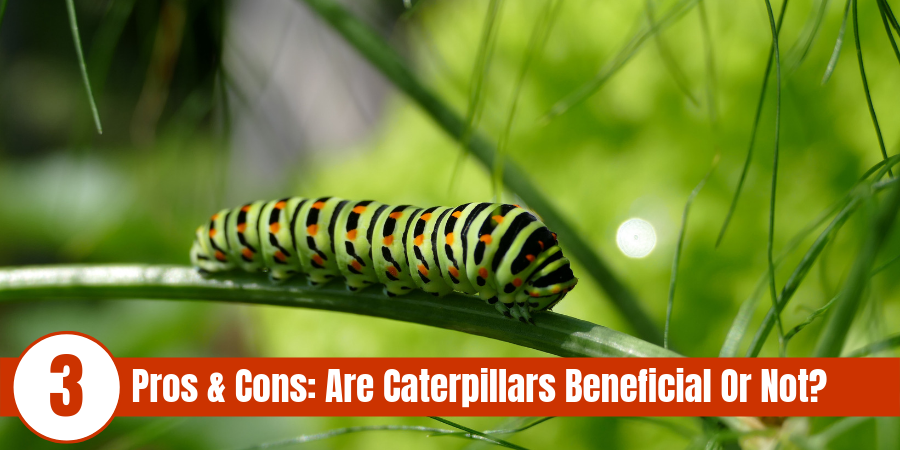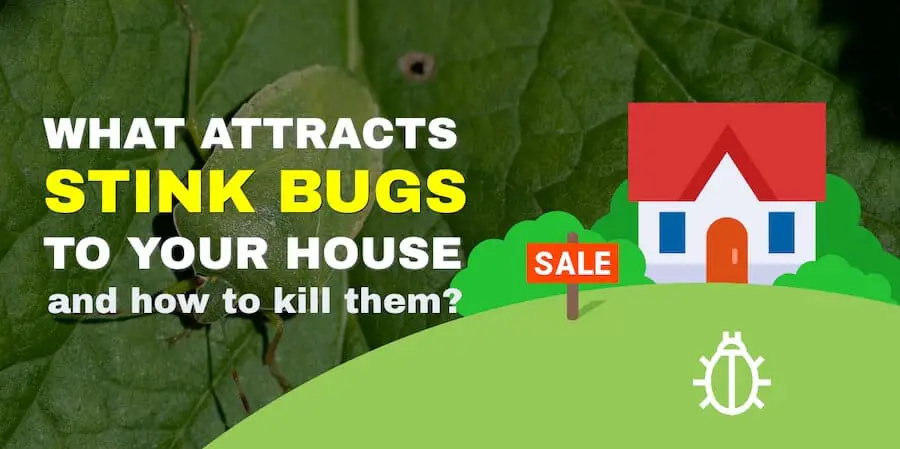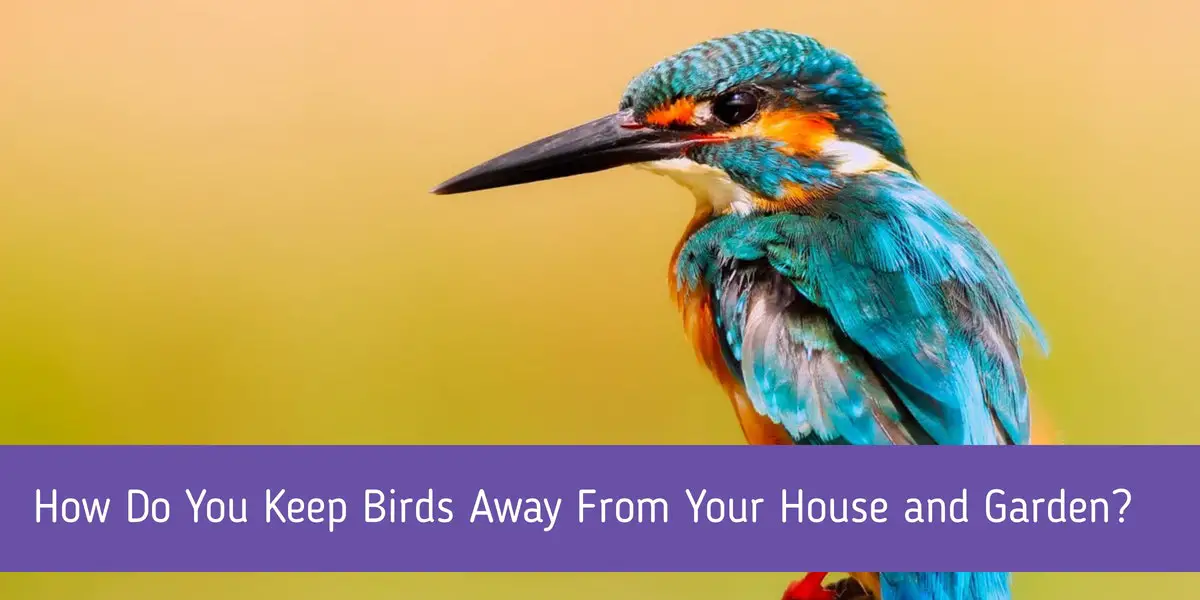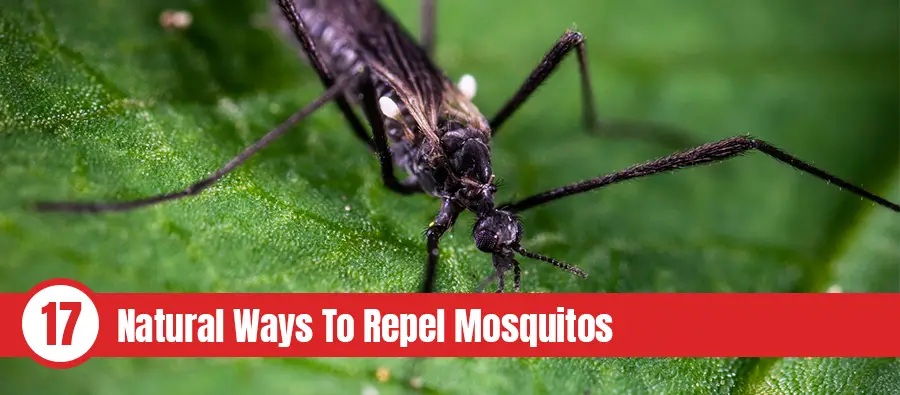Many people wonder whether caterpillars are beneficial or not. It’s hard to imagine anyone categorizing such a seemingly docile creature as harmful. Yet caterpillars can cause serious damage to vegetation, particularly for gardeners and farmers. Though many of them become beautiful butterflies, they can create ugly situations before the transition.
So, are caterpillars beneficial or not? In general, caterpillars are beneficial creatures. Some pros that illustrate their benefits are:
- They become butterflies and moths
- They are a food source
- They play an important role in ecosystems
However, the presence of caterpillars can also be negative. Some cons to illustrate this are:
- They are harmful to plants
- They can sting and be harmful to humans
- They can become an agricultural pest infestation
Overall, nobody wishes for the elimination of caterpillars. Most people find them fascinating, as they are part of an important lifecycle and reveal a dramatic transformation in nature. Yet they are classified as pests, and therefore can be problematic in great numbers and certain environments. To understand whether caterpillars are beneficial or not, it’s important to consider some pros and cons of these creatures.
Table of Contents
What Caterpillars Are
Most people would consider caterpillars to be insects or bugs. However, they are not an individual species or group of species. Caterpillars are actually the insect larvae of moths and butterflies. They represent the second stage of four in the life cycle of a butterfly or moth, between the egg and pupa stages.
Caterpillars vary widely in appearance with hair, spots, stripes, and colors. In some circumstances, this variation helps them camouflage to avoid predators, but they are fairly easy to see for the most part.
Caterpillars share many characteristics, including an elongated body and head capsule. It appears that they have many legs, but they actually have just six official ones. The additional “limbs” are called prolegs, which are used for climbing and are not carried into adulthood.
Most types of caterpillars are herbivorous, but a small percentage is insectivorous. Caterpillars generally don’t move much and can spend their entire lives on the same plant or leaf. Their main goal is to eat as much as they can to become large enough to pupate (the third stage of the life cycle). Caterpillars don’t drink additional water due to the hydration they receive from the plants they eat.
Caterpillar Pros
Caterpillars are considered by most people to be rather lovable creatures. They are featured in many children’s books and are one of the most studied species across time and region. For the most part, individual caterpillars are fairly harmless and provide some benefits as well.
Caterpillars are valued primarily because they become butterflies and moths. They are also a source of food and play an important role in ecosystems. Various species of caterpillar are sources of silk, and some can be used for biological control of invasive pest plants.
Here are three important pros when it comes to caterpillars:
1. They become butterflies and moths
Caterpillars become butterflies and moths which are important pollinators and symbols of biodiversity. For as sturdy as caterpillars are, butterflies and moths are fragile and under threat from environmental change. Their habitats have been destroyed on a large scale, and their numbers have been affected by atmospheric pollution and climate shift.
Many environmentalists, scientists, and nature lovers have worked for butterfly and moth conservation. Preserving these species means preserving their larvae—caterpillars. Most people find more value in developed butterflies and moths rather than their earlier caterpillar stage, but one can’t grow without the other.
Here are some reasons butterflies and moths are so valuable and warrant conservation:
- Biodiversity: butterflies and moths are highly diverse, featuring over 250,000 species.
- Aesthetics: butterflies in particular often represent freedom, beauty, and peace in nature, literature, religion, and natural science.
- Education: butterflies and moths have a transformative life cycle, from egg to caterpillar to chrysalis, that is considered one of the wonders of nature. This life cycle and their migration are often part of the elementary natural science curriculum in schools across the globe.
- Science: butterflies and moths are considered “model” organisms for biological research such as embryology, evolution, genetics, and biodiversity. The scientific study of these species has persisted across time and geography, making them a unique data source and a reflection of environmental changes and impacts.
- Ecosystem: the presence of butterflies and moths indicate healthy environments and ecosystems. They also indicate the presence of other invertebrates that collectively benefit the environment through pollination and natural pest control.
- Food Chain: moths and butterflies are important to the food chain as prey for birds, bats, and insectivorous animals.
Since caterpillars transform into valuable butterflies and moths, the preservation of these crawling larvae is essential to the conservation of their beautiful winged metamorphoses.
2. They are a food source
Caterpillars, as well as butterflies and moths, are food sources for other animals and people in some regions and cultures. The primary predators of caterpillars are birds, ladybird beetles, and yellow jackets.
- Birds: Caterpillars are the principal food source for many bird species. They are easy to catch due to their slow movement and attractive colors. Caterpillars are found in large numbers in nearly every part of the world, and birds can capture them on treetops as well as on the ground where they feed on grass and plants.
- Ladybird Beetles: Ladybird beetles are tiny, spotted, brightly colored beetles. They eat small caterpillars that are soft and easy to consume. Gardeners often use these beetles to reduce aphid and caterpillar populations that harm plants.
- Yellow Jackets: Yellow Jackets, often known as wasps, carry caterpillars to their nests as a means of providing food for their offspring. Yellow Jackets are more numerous in spring and early summer, and they can capture caterpillars of nearly any size.
In some regions and cultures, people utilize caterpillars as a food source as well. For example, in South Africa, mopane worms are eaten by bushmen. In some areas of Botswana, caterpillars are harvested every day due to their high nutritional value. In China, silkworms are considered a delicacy. Caterpillars contain higher amounts of fat and protein than fish, beef, and even lentils.
Environmental scientists are exploring caterpillar farming as a means of treating malnutrition and food security issues in impoverished nations, particularly in West Africa. Many environmentalists are supporting insects as alternatives to meat and its environmentally unfriendly production since they emit far less greenhouse gas and take up much less environmental space.
3. They play an important role in ecosystems
An ecosystem is a large community made up of living organisms, such as plants, animals, and microorganisms, and non-living entities in a particular area. Everything living and non-living in an ecosystem is connected through nutrient cycles and flow of energy. Caterpillars are generally part of agroecosystems, which are ecosystems based on agricultural activity.
Caterpillars play an important role in ecosystems due to their benefits in the life cycle of butterflies and moths and as a food source for other animals. Butterflies and moths are pollinators, meaning they help fertilize plants by spreading pollen so the plants can reproduce. This ensures biodiversity and vegetation health in agroecosystems.
As a food source, caterpillars ensure the survival of birds and other insects. This is especially important in maintaining balance and biodiversity of animals within agroecosystems. Birds that prey on caterpillars are important to plant reproduction and control of pest populations such as insects, rodents, and even snakes, which can be harmful to agroecosystems. In addition, birds serve as prey to other animals, making them an important part of the food chain.
Though caterpillars are considered pests themselves, they strongly feature as a balancing organism within agroecosystems.
Caterpillar Cons
Gardeners, farmers, and other agricultural enthusiasts would most likely not find caterpillars to be lovable creatures—other than perhaps in a children’s book. Caterpillars are virtually always harmful to plants, and in large numbers, they can create vegetation and agricultural ruin.
Caterpillars are known as voracious feeders and many of them are considered serious agricultural threats as pests. They can severely damage and destroy vegetation, crops, and other agricultural produce. They can also be harmful to humans with their stings.
Here are three unfortunate cons when it comes to caterpillars:
1. They are harmful to plants
Unlike many species that must search to find food, detect enemies, and reproduce, the only goal of caterpillars is to eat the plant life around them. Caterpillars have strong mandibles for cutting and chewing through plants and leaves. They are relentless feeders and can cause an exceptional amount of harm to plants and other vegetation.
Caterpillars hatch from eggs deposited by butterflies and moths on plants and trees. These plants and trees are considered caterpillar “hosts.” Once they hatch, by chewing through their eggs and eating the eggshells, they begin devouring the host plant.
Caterpillars eat until they grow too big for their bodies, which causes them to molt and grow new and roomier skin. They continue to eat until they are ready for the pupae stage. This larval stage is crucial since caterpillars must consume enough nourishment to sustain themselves through the pupal stage and into adulthood. Without this enormous amount of proper nutrition, they may not have enough energy reserves to complete their metamorphosis.
Some malnourished caterpillars reach adulthood, but they are unable to produce eggs. The larval life cycle stage typically lasts several weeks, meaning caterpillars eat an astounding amount of vegetation. Some consume up to 27,000 times their body weight during this phase.
Therefore, caterpillars are extremely harmful to plant life. Gardeners, growers, and farmers alike consider them one of the most destructive agricultural pests.
2. They can sting and be harmful to humans
Caterpillars have particularly aggressive defense mechanisms for protection against predators such as birds, other insects, and even humans. These creatures often have spiny bristles or hair-like stalks with detachable tips that can lodge in the skin or mucous membranes and cause irritation.
Some caterpillar species have venom glands within their bristles, making them quite dangerous. Other caterpillars absorb toxins from host plants which make them unpalatable to some of their predators.
Caterpillar hair can cause health problems in humans due to their venoms. The most common affliction is skin rash; however, there have been some fatal cases of intracranial hemorrhage in areas where the most venomous species are present.
Caterpillars can also cause forms of conjunctivitis, as the sharp barbs of their hairs can be lodged in soft tissue and mucous membranes—particularly in the eye. These hairs are difficult to remove, which increases risk as they can migrate across membranes and spread infection.
Surprisingly, caterpillar stings often take place indoors. Their bristles and hairs enter structures through ventilation systems and accumulate in indoor environments due to their small size and the difficulty in expelling them out. This accumulation increases the risk of human contact indoors, even more than outdoors.
3. They can become an agricultural pest infestation
Caterpillar infestations can begin at different times of the year, but most are hatched in late spring. Unlike many other pests, their reproductive growth is not exponential. However, they make up for this limited reproductive capacity with their ravenous feeding of trees, plants, fruits, and other vegetation.
Caterpillars are rapid feeders and merciless pests when it comes to crops and agriculture. They can cause damage severe enough to the point of total crop loss due to complete defoliation. Many trees are resilient in handling a couple of consecutive years of defoliation. However, most crops produced by farmers and growers are not resilient to caterpillar infestation.
Caterpillars are not difficult to detect, but if not treated immediately they can cause irreversible damage within a short period. Caterpillar infestation can be identified and controlled if multiple, aggressive steps are taken as soon as possible. Unfortunately, this often involves chemical pesticides which can create health and environmental hazards.
Caterpillar Pest Control
The best way to control caterpillars as pests is to examine plants, crops, and other vegetation daily. Any signs of moth eggs or small green caterpillars should be removed and disposed of immediately. Most caterpillars are easily seen, but plants also indicate their presence with ragged edges and holes in leaves. Enough caterpillar damage to a young plant can kill it.
Other methods of caterpillar pest control include:
- Garden Lighting: avoid lighting gardens at night. This will reduce the attraction of moths, which may lay eggs that hatch into caterpillars.
- Plant Cover: plants can be covered with porous netting that allows airflow and sunlight but deters pests.
- Companion Planting: planting strong-smelling herbs such as peppermint, sage, and lavender are discouraging to caterpillars.
- Rotate Crops: planting the same type of vegetation in the same place annually allows moths and caterpillars to establish a presence. Rotating crops reduces this risk.
- Pesticides: many pesticides can also eliminate caterpillars. Experts recommend organic pesticides rather than chemical-based treatments to reduce the risk of health and environmental hazards.
The best pest control method when it comes to caterpillars is the regular examination of vegetation and diligent removal of them, which can keep the population low.
Are Caterpillars Good in the Garden?
A few individual caterpillars are not considered harmful when it comes to gardens. However, a garden infested with caterpillars is not good at all. Thankfully, gardeners can take measures to control and discourage caterpillars before they damage vegetation and without using harmful chemical pesticides.
The key to caterpillar control for gardeners is diligence. By inspecting plants regularly and closely, infestations can be caught early, and caterpillars can be removed by hand. It’s important for gardeners to wear gloves in this case to avoid stings and harmful caterpillar venom.
In addition, gardeners can plan and manage their gardens by carefully using preventative measures such as row covers and strong-smelling herbs which help discourage caterpillars from taking up residence. There are many smart and natural solutions that, if utilized quickly and thoroughly, can control the presence and potential damage caused by caterpillars. This makes for a healthier garden and environment by avoiding toxic pesticides.
Conclusions
Overall, caterpillars are simple creatures, but they can create complex problems. They represent biodiversity and health within ecosystems and transform into one of the most beautiful and important pollinating insects known to humans. They are also a significant element of the food chain in nature, particularly for the bird population, which is crucial in ensuring growth, pollination, and survival of plant life as well.
Unfortunately, caterpillars have to destroy plant life by eating it in order to survive and be part of this beneficial pollination cycle. This supports the idea that caterpillars come with as many cons as they do pros.
For as much damage as they cause to plant life, they are just as necessary to the existence of vegetation. Gardeners, growers, and farmers should not sacrifice their efforts to host an infestation of caterpillars. However, their preservation is important to the balance of agroecosystems.
Therefore, it’s best to understand and implement non-toxic methods of deterring caterpillar infestations rather than attempting to eradicate them by exterminating full populations.
